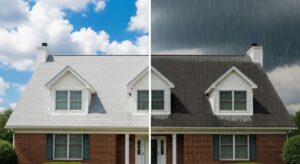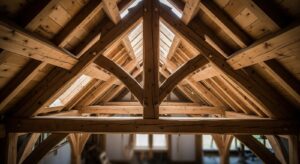Replacing your roof is one of the biggest investments you’ll make in your home. But did you know that choosing the right materials for your roof replacement could save you thousands? Whether you’re going the DIY route or working with professionals, understanding the materials needed for roofing is crucial to ensuring your roof stands strong and protects your home for decades.
In this guide, we’ll walk you through the key materials you’ll need, why they’re important, and how to make the best choice for your roof replacement project.
What Does a New Roof Consist of?
Before diving into the roofing materials list, let’s break down the components that make up a roof. A roof is made up of several layers that work together to protect your home from the elements. Here’s a simple breakdown:
- Roofing Material (shingles, metal panels, tiles)
- Underlayment (a waterproof layer beneath the shingles)
- Flashing (installed around roof penetrations like chimneys and vents to prevent leaks)
- Fasteners (nails or screws that secure everything in place)
- Ventilation (keeps your attic cool and dry)
Understanding each of these elements will help you make informed decisions and ensure that your roof replacement is done right.
Materials for Your Roof Replacement: What You Need to Know
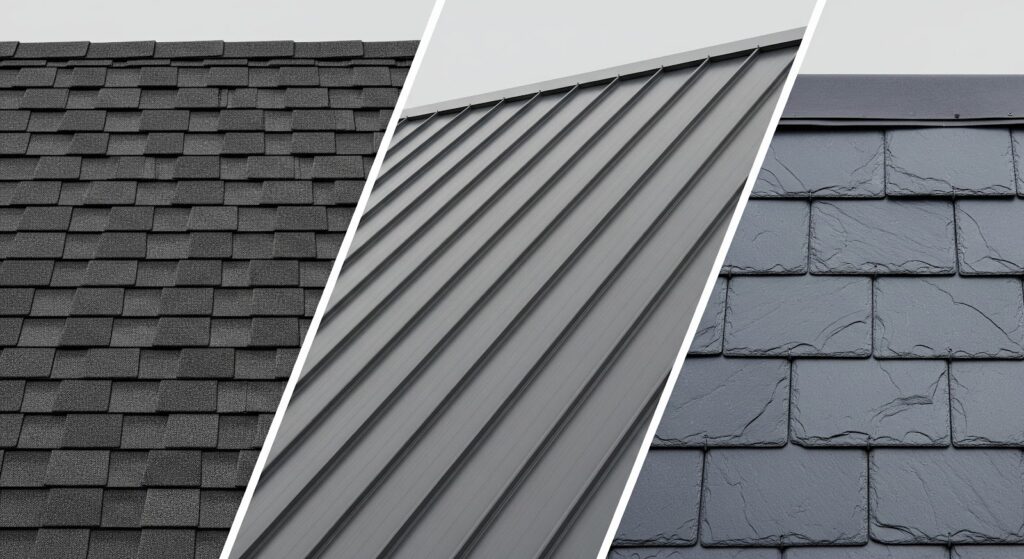
1. Roofing Shingles: The Protective Layer
The shingles are the most visible part of your roof, and they play a crucial role in protecting your home. Whether you choose asphalt shingles, metal roofing, or slate tiles, each option has its pros and cons.
Types of Shingles:
- Asphalt Shingles: These are affordable and the most commonly used roofing material. They come in two main styles: 3-tab (traditional and cost-effective) and architectural (more durable and aesthetically pleasing).
- Metal Roofing: Known for its longevity and energy efficiency, metal roofing is becoming increasingly popular, especially in regions with harsh weather conditions. For a deeper understanding of the benefits of metal roofing, check out this article from Energy.gov.
- Slate Roofing: A premium option that offers elegance and durability, slate roofing can last for over 100 years when properly maintained. However, it’s heavy and may require additional structural support. Explore more about the beauty and durability of slate roofing on The National Trust for Historic Preservation.
Cost Range:
- Asphalt Shingles: $90–$150 per square
- Metal Roofing: $400–$800 per square
- Slate Roofing: $800–$1,500 per square
Want to learn more about the materials needed for roofing? Check out our Ultimate Guide to Residential Roofing Materials for an in-depth comparison.
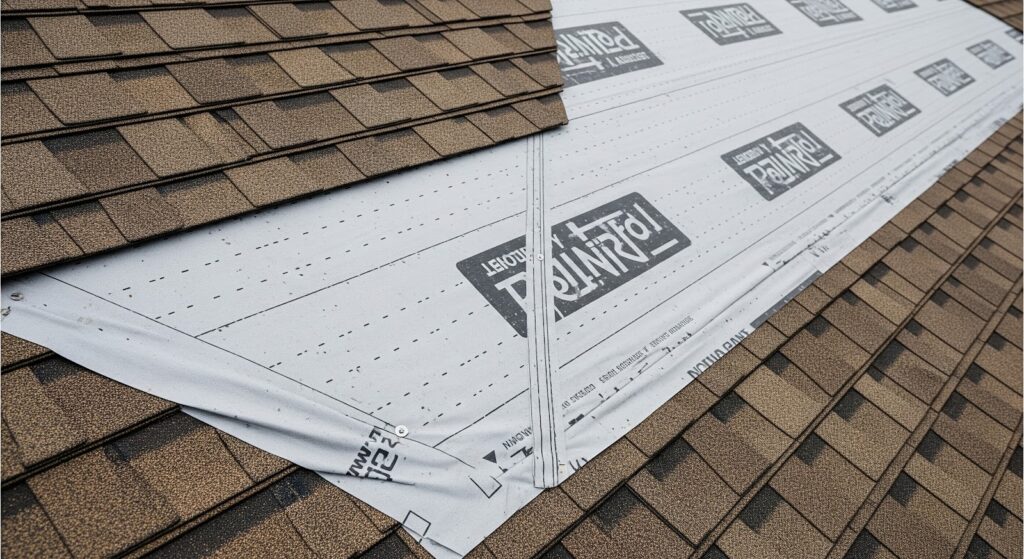
2. Underlayment: The Waterproof Barrier
Underlayment provides a secondary layer of protection beneath the shingles. This layer prevents water from seeping into your home, even if the shingles become damaged. It’s critical for ensuring your roof lasts for many years.
- Felt Underlayment: Traditional and cost-effective, made from asphalt-impregnated paper.
- Synthetic Underlayment: More durable and resistant to tearing, often preferred for its superior waterproofing properties.
- Ice and Water Shield: An essential material in colder climates to prevent ice dams from forming.
Cost Range:
- Felt: $30–$50 per square
- Synthetic: $70–$100 per square
For a deeper dive into underlayment options and how they impact your roof’s lifespan, check out this guide from The Spruce.
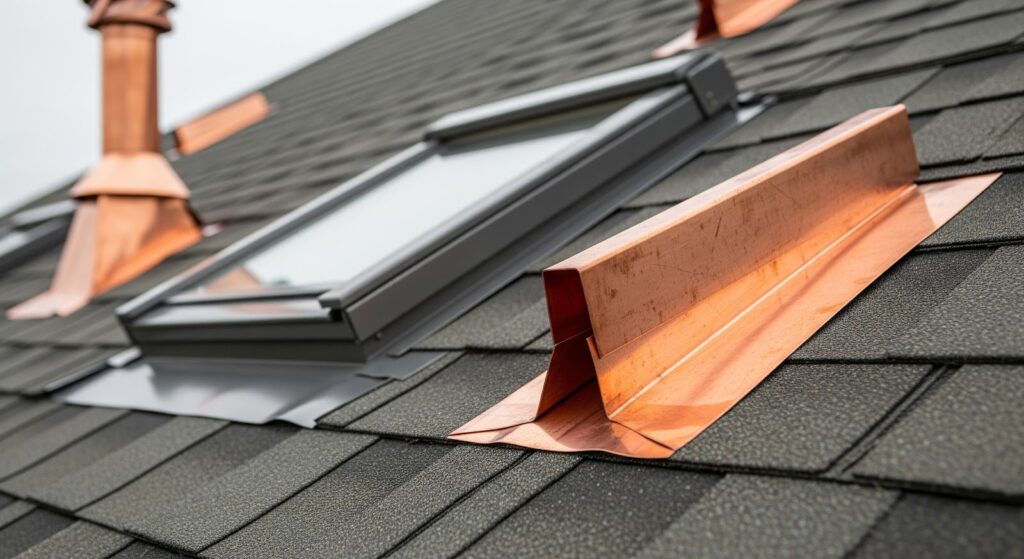
3. Flashing: The Leak Preventer
Flashing is used around roof penetrations like chimneys, skylights, and vents to prevent water from entering your roof. It is typically made of metal, such as aluminum or copper, both of which are corrosion-resistant.
Types of Flashing:
- Step Flashing: Installed around chimneys or walls to prevent water from getting in at the joints.
- Valley Flashing: Installed where two roof slopes meet to redirect water away from these critical areas.
Cost Range:
- Metal Flashing: $3–$5 per linear foot
To understand how flashing works to protect your roof, explore this comprehensive flashing guide.
4. Fasteners: The Roof’s Anchor
Fasteners like nails or screws are used to secure all roofing components in place. The type of fastener you use will depend on the material you’re working with.
- Nails: Used primarily with asphalt shingles.
- Screws: Commonly used with metal roofing to ensure a more secure and long-lasting hold.
Cost Range:
- Nails: $0.02–$0.10 per nail
- Screws: $0.15–$0.25 per screw
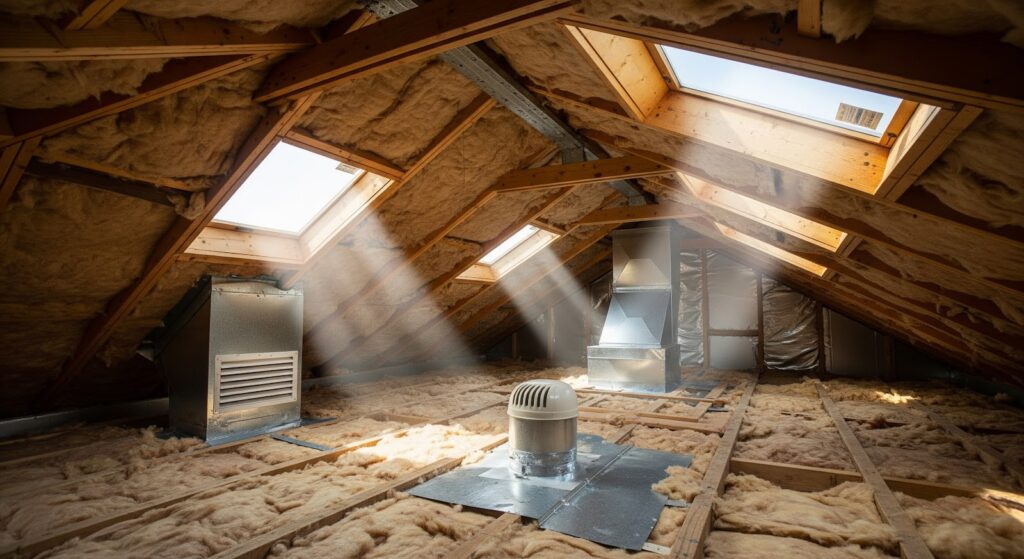
5. Ventilation: The Roof’s Breath of Fresh Air
Proper ventilation is crucial to maintaining a healthy attic environment and extending the lifespan of your roof. It helps to prevent moisture buildup, which can cause mold, wood rot, and even roof failure.
- Ridge Vents: Installed along the peak of the roof, these allow hot air to escape.
- Soffit Vents: Installed at the eaves of the roof to allow fresh air to flow into the attic.
- Exhaust Fans: These fans help to regulate attic temperature, especially in hot climates.
Cost Range:
- Ridge Vents: $1.50–$3 per linear foot
- Soffit Vents: $1–$2 per linear foot
To learn more about roof ventilation and its importance, visit Energy.gov’s Guide to Roofing.
Shingle Roof Material List: Key Materials to Remember
If you’re planning to replace your roof with shingles, here’s a quick shingle roof material list:
| Material | Purpose | Cost Range per Square |
| Asphalt Shingles | Main weather protection layer | $90–$150 |
| Underlayment | Waterproof barrier below shingles | $30–$100 |
| Flashing | Prevents leaks around penetrations | $3–$5 per linear foot |
| Fasteners (Nails) | Secures roofing materials | $0.02–$0.10 per nail |
| Ventilation | Ensures attic airflow | $1–$3 per linear foot |
Materials List for Roof Replacement: Everything You’ll Nee
Replacing a roof involves more than just shingles. Here’s a comprehensive list of materials for a full roof replacement:
| Material | Function | Cost Range |
| Shingles (Asphalt, Metal, Slate) | Provides protection from the elements | $90–$1,500 per square |
| Underlayment (Felt/Synthetic) | Adds waterproofing and insulation | $30–$100 per square |
| Flashing (Metal) | Prevents water from entering joints | $3–$5 per linear foot |
| Fasteners (Nails/Screws) | Secure roofing materials to the roof deck | $0.02–$0.25 each |
| Ventilation (Ridge Vents, Soffits) | Prevents moisture buildup and extends roof life | $1–$3 per linear foot |
Cost Breakdown for Roofing a House
To help you estimate the roof replacement cost, here’s a simple table that breaks down the costs for various materials needed for roofing:
| Material | Cost per Square | What’s Included | Total Estimated Cost |
| Asphalt Shingles | $90–$150 | Shingles, underlayment, nails | $2,000–$6,000 for a 2,000 sq. ft roof |
| Metal Roofing | $400–$800 | Metal panels, screws, underlayment | $8,000–$16,000 for a 2,000 sq. ft roof |
| Slate Roofing | $800–$1,500 | Slate tiles, underlayment, fasteners | $16,000–$30,000 for a 2,000 sq. ft roof |
| Wood Shakes | $400–$700 | Wood shingles, underlayment, fasteners | $8,000–$14,000 for a 2,000 sq. ft roof |
What’s Included in Roof Replacement?
If you’re replacing your roof, here’s a summary of what’s included in roof replacement:
| Component | Purpose |
| Removal of old roofing material | Stripping off the old shingles and underlayment |
| New underlayment | Adding a fresh waterproof layer |
| New shingles/roofing material | Installing new shingles, metal, or slate |
| Flashing & ventilation | Ensuring proper drainage and airflow |
Conclusion: Start Your Roof Replacement the Right Way
Now that you’re familiar with the materials needed for roofing, you’re ready to take on your roof replacement project with confidence. Whether you opt for affordable asphalt shingles, durable metal roofing, or premium slate, understanding what goes into your roof ensures you make the best choice for your home.
If you’re unsure about which materials are best for your climate or home style, reach out to a licensed roofing contractor. They can help guide you through the selection process and ensure your roof is installed correctly.
Ready to get started? Schedule a roof inspection today and ensure your home is protected for years to come.
Frequently Asked Questions (FAQs)
1. What materials are needed for roofing a house?
Essential materials include roofing shingles, underlayment, flashing, roof decking, drip edge, ventilation components, fasteners, and starter strips.
2. How long does a roof replacement take?
The duration varies based on roof size and complexity but typically ranges from 1 to 3 days for a standard home.
3. Can I install a new roof over existing shingles?
In some cases, it’s possible to install new shingles over old ones, but only if there’s one existing layer and no significant damage to the underlying structure.
4. How can I estimate the cost of roof replacement?
Consider factors like material type, roof size, labor costs, and any additional features like skylights or chimneys. Obtaining multiple quotes from reputable contractors can provide a clearer estimate.




